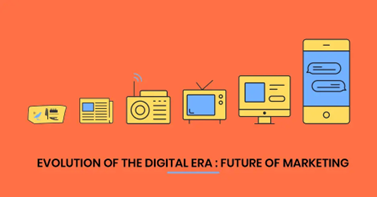The Rise of Video Marketing: A Quick Overview
Video marketing has evolved from being a “nice-to-have” into a “must-have” component of every brand’s strategy. In the early 2000s, it was TV commercials and YouTube pre-roll ads. Fast forward to 2025, and we now live in a world of TikTok trends, YouTube Shorts, Instagram Reels, and AI-generated explainers.
What’s changed? People want content they can see, feel, and react to in real time. Video is no longer a medium—it’s the message, the experience, and the most powerful digital asset.


Why Video Marketing is Trending Now
1. Mobile-First Behavior
Smartphones dominate how we consume content. More than 80% of internet traffic in 2025 is driven by mobile. Video formats are naturally suited for thumb-scrolling behavior.
2. Better ROI
Marketers report 89% higher ROI using video campaigns over static formats. Video increases click-through rates, brand recall, and social shares.
3. Emotional Storytelling
Video conveys tone, facial expressions, and body language—human elements that static text or images often miss. People buy with emotions; video captures emotions perfectly.

Trend #1: Short-Form Video Dominance
Platforms like TikTok, Instagram Reels, and YouTube Shorts are redefining how brands engage with their audiences. These micro-videos (under 60 seconds) are optimized for:
- Quick storytelling
- Trend riding (e.g., challenges, memes)
- Instant user attention
Even B2B brands are adopting short-form to humanize their content.


Trend #2: Live Streaming and Real-Time Engagement
Live videos are authentic, unscripted, and highly engaging. Brands use live streams for:
- Product demos
- Behind-the-scenes tours
- Influencer Q&As
They allow direct viewer interaction, which builds trust and community. Platforms like Instagram Live, LinkedIn Live, and Twitch are capitalizing on this.
Trend #3: AI-Powered Video Creation
Tools like Synthesia, Pictory, and Runway allow marketers to:
- Auto-generate talking-head videos using AI avatars
- Convert blogs into videos
- Personalize video content at scale
AI reduces production time while maintaining professionalism, enabling personalized content for thousands of customers in minutes.
Trend #4: Shoppable Videos & Social Commerce
Videos are no longer passive—they’re transactional.
- Instagram now lets you tag products in Reels
- YouTube enables “Click to Buy” CTAs directly in video
- Platforms like NTWRK and Amazon Live blend content and commerce seamlessly
Shoppable videos convert interest into instant sales, shortening the customer journey.
Trend #5: Interactive Videos
With platforms like Veed.io and Vizia, brands are creating interactive content such as:
- Click-to-choose product demos
- Embedded quizzes and polls
- Branching storylines
These boost engagement and dwell time, making users part of the story.
Trend #6: User-Generated Video Content
UGC is exploding. Brands are encouraging real users to create:
- Unboxing videos
- Testimonials
- Reaction videos
It’s more authentic, trusted, and 94% more influential than brand-produced content. Hashtag challenges and TikTok duets amplify this effect.
Trend #7: Vertical Video Optimization
Vertical is the new normal. Why?
- 95% of video content is watched on mobile
- Horizontal videos now feel unnatural on mobile-first platforms
Brands that ignore this trend risk being left behind in feed algorithms.
Trend #8: Silent & Captioned Videos
Around 85% of videos on social media are watched on mute. Captions ensure:
- Accessibility
- Retention in sound-off environments
- Better comprehension and SEO ranking
Use auto-caption tools like Kapwing or Rev.com to optimize content.
Trend #9: Educational and How-To Videos
People are searching YouTube like Google. Brands that offer value (instead of just selling) win trust.
Examples:
- SaaS companies offering onboarding guides
- Skincare brands giving how-to routines
- Finance companies teaching budgeting tips
These videos position brands as thought leaders.
Trend #10: AR/VR in Video Marketing
Immersive video is on the rise. Brands are investing in:
- 360-degree videos
- AR try-on features for eyewear, clothes, makeup
- Virtual showrooms for automobiles and real estate
With Apple Vision Pro and Meta Quest 3, expect more consumers ready for video beyond the screen.
Future Scope: What’s Next for Video Marketing?
Here’s what we predict for the future:
- Hyper-personalized video ads: Custom-tailored down to the user’s name, location, and behavior.
- AI-generated avatars & voiceovers: Marketing videos created without human presence.
- 3D video storytelling: Especially for eCommerce, architecture, and luxury brands.
- In-video search functionality: Users will soon search within videos like documents.
- Emotion-based video triggers: Facial recognition tools measuring viewer emotion and adapting the content in real time.
The future is interactive, immersive, and intelligent.
How Brands Can Adapt to These Trends
1. Start Small, Scale Smart
Begin with reels and repurpose content. You don’t need a studio—just a smartphone and a strategy.
2. Focus on Platform-Specific Strategy
- LinkedIn: B2B explainers, interviews
- Instagram: Reels, stories
- YouTube: Long-form, Shorts, tutorials
- TikTok: Fun, relatable, challenge-driven content
3. Invest in Tools
Use tools like:
- Canva Pro (video templates)
- InVideo (editing)
- Lumen5 (blog-to-video)
Metrics That Matter in Video Marketing
| Metric | What It Tells You |
| View Duration | How engaging your video is |
| Click-Through Rate | How well your CTA performed |
| Engagement Rate | Likes, shares, comments |
| Conversion Rate | ROI for eCommerce or lead gen |
| Watch Completion Rate | If users watch your full video |
Track these to measure real impact—not just vanity views.
Industries Benefiting Most from Video Marketing
- Retail & eCommerce – Product demos, try-ons, shoppable links
- Education & eLearning – Explainers, webinars, visual tutorials
- Real Estate – Property walkthroughs, virtual staging
- SaaS & Tech – Onboarding videos, client testimonials
- Healthcare – Doctor Q&As, patient journeys
FAQs on Video Marketing Trends
1. Why is short-form video trending so fast?
Because it’s quick, entertaining, and optimized for mobile consumption.
2. Are video ads better than display ads?
Yes. Video ads enjoy higher engagement, better retention, and stronger emotional impact.
3. What is the best platform for video marketing?
It depends on your audience. Instagram and TikTok are ideal for Gen Z; LinkedIn and YouTube are great for professionals and long-form.
4. How do I start with zero budget?
Use free tools like Canva and shoot videos on your phone. Focus on storytelling, not production value.
5. Can AI really help with video creation?
Absolutely. Tools like Synthesia allow AI avatars to present your script without cameras or actors.
6. Will video marketing replace other forms of content?
No—but it will dominate them. Blogs, emails, and static posts still matter, but video will always have higher engagement.
Conclusion: Lights, Camera, Convert!
Video marketing in 2025 isn’t optional—it’s essential. From short-form virality to AI-powered personalization, the game has changed.
Whether you’re a solopreneur or a global brand, the tools and trends are ready for you. All you need is a willingness to experiment and a clear narrative.
In this age of shrinking attention spans, video is your loudest voice. So pick up your camera, or your phone, and press record—your audience is waiting.

